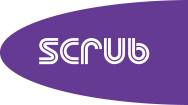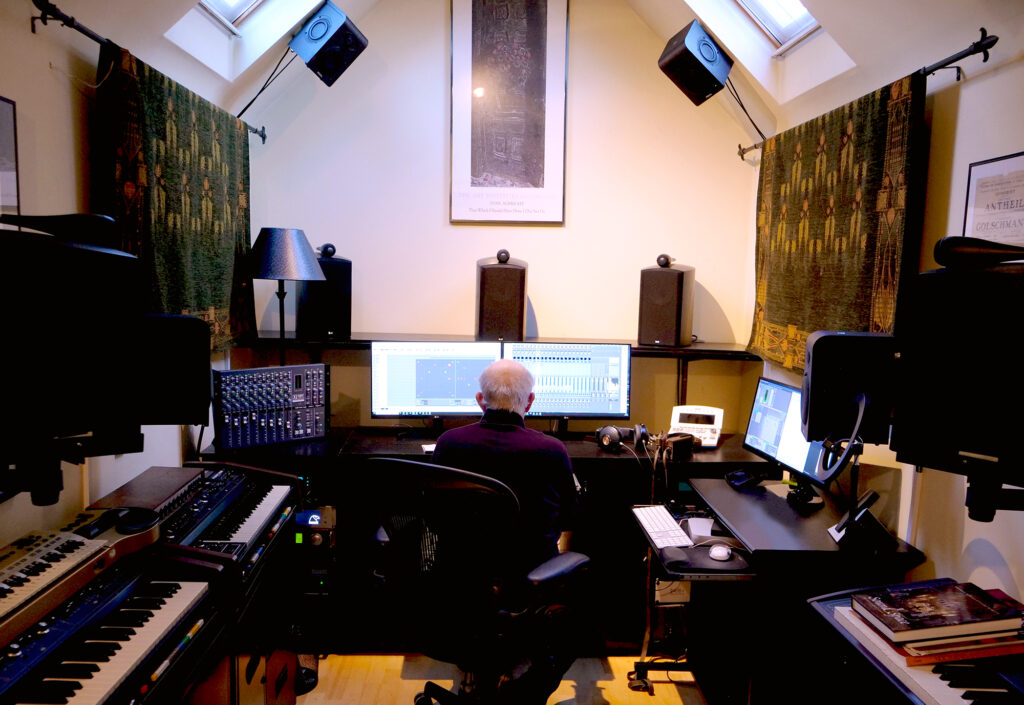HHB recently had the opportunity to assist Craig Leon in upgrading the monitoring for Dolby Atmos in his studio. During the install we sat down to talk with Leon about immersive audio, his work, and to get some advice on how to get the most out of this format. Talking with him is always a delight; with a background that spans across many genres and roles he always comes to a discussion with an interesting point of view.
Leon is a musician, arranger, composer, and producer known for producing the first Ramones album as well as the early discovery of Talking Heads. His other projects include early Blondie records, and Suicide. Additionally, he has always worked to develop new ideas and ways to work in alternative forms within contemporary music. Previously HHB were able to work with him on Bach to Moog, an album and live concert that married electronic instruments to classical.
When talking about Dolby Atmos, it is easy to discuss as though it were a relatively new format. However, music composition designed for spatial listening has been around for centuries; pointing to a recent mix Craig did of an ensemble piece that was first performed in a church in the 1500s. At the time it was first played, the musicians were placed in different areas within the church, immersing the listener in the centre of the soundscape. Reportedly, there were also even earlier examples of this sort of composition.
Leon points out that in the modern era, binaural recordings of the Philadelphia Orchestra for Bell Labs were captured in 1932, as well as many other examples of spatial composition and recording.
“People have been trying to do this for a long time and doing it relatively successfully. Very often composers have thought this way, Wagner thought of where the orchestra was coming from and the about the singers in 3D,” he comments.
What is now exciting about the format is the growth of technology that makes immersive audio more readily available both for the people producing it and those experiencing it. Leon looks forward to taking iconic classical mixes of older material and putting them into Atmos, to achieve an atmosphere closer to what a listener would experience in a concert hall.
He points out that better sounding immersive mixes and live performances can be created by musicians, recording engineers, and producers who start the recording process by monitoring in Atmos from the very beginning of the process. Craig’s upcoming album in progress, his currently available album “The Canon” and many of the earlier works spanning his career were also recorded with an immersive mix in mind.
“After the musical sketches are done, I map out the eventual live performance in Atmos before starting anything else. I work on recording the pieces, monitoring from the beginning in Atmos designed not to just sound immersive in a theatre, but in home and headphone playback.”
To do this Leon works on an interesting setup, which differs from many others designed to work with Dolby Atmos for music. Due to the love of analogue sound, along with an appreciation for the capabilities of digital audio, Leon’s system relies on analogue inputs and processing along with both Pyramix and Pro Tools workstations.
“I’m pretty sure that the debate of analogue vs digital is not seen as relevant anymore. We shouldn’t care but the medium or format as long as it sounds like what we’re searching for.”
When asked what advice he’d offer to those wanting to work in immersive, he replied, “I would tell them to do their initial recording in a great room, which is what I always tried to do, going all the way back to the first Ramones records and everything is get the best room I could afford to put somebody in.”
“Then come and place as many mics in as many interesting places that sound good to your ear or even look like they might when you’re walking around. You need to capture both height and floor sources. Record as much material as you can without it sounding out of place and finally don’t use all on your recording mix but have the option to do so.”
“It isn’t a given that it costs a fortune to upgrade a studio for spatial work provided that you do it wisely within a set budget and with a good partner like HHB.”
His current process has been focused around new classical hybrid organic/electronic music with spatial audio in mind. “Atmos really works with electronic music because its sound space has no boundaries. There doesn’t have to be a finite up, down, front of rear sound source in the conventional sense. More and more concerts are happening again and classical orchestras who I work with are showing greater interest in doing immersive concerts and updating their existing iconic works to new spatial formats.”
“I’m already working on many classical projects. I’ve recently done immersive versions of the first three Stravinsky ballets, Gabrieli’s Antiphonal Music for Brass and orchestral works of Bartok as well as other albums I’ve written and produced.”
To close out the interview we asked Leon what heritage pop songs or albums he’d like to hear in done redone in immersive. ” Neil Young’s ‘Tonight is the Night’ would be great and any or all of the first three Grateful Dead albums, Bruce Springsteen’s “Nebraska “would be unbelievable in Atmos or 360 if it was done creatively. I don’t know if any of these have been mixed creatively in immersivity yet but, if they haven’t, someone should.”
Leon’s 40th Anniversary Anthology of Interplanetary Folk Music vols 1 & 2 Dolby Atmos versions will be released in Summer and Fall 2022. The new album follows in late 2022.



